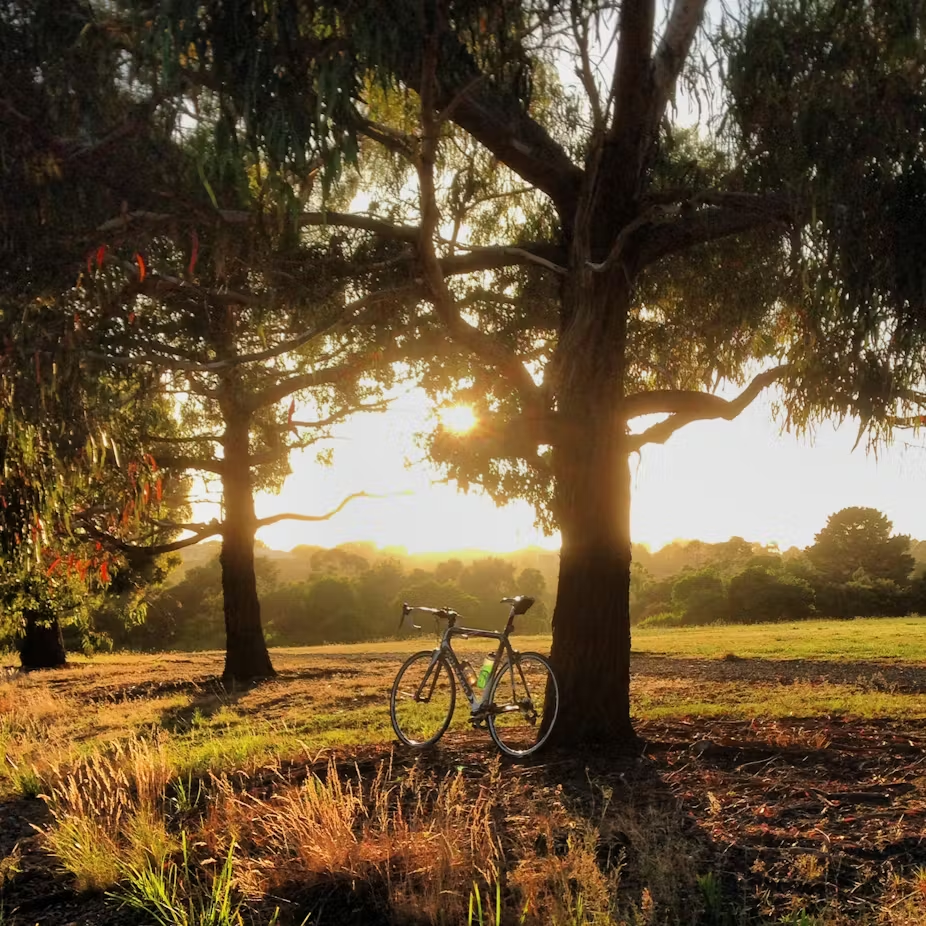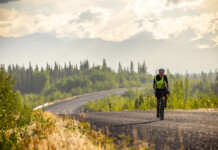By Chris Blinzinger — I awoke at 3 a.m. and realized I couldn’t swallow and had severe Vertigo. My head was spinning and causing nausea. During the next few hours, as the vertigo worsened, I pulled my phone out on camera mode to check my smile for uniformity. As a three-decade veteran of Emergency Medical Services (EMS) I checked myself for signs of stroke. All my checks were negative. I finally called 911 as symptoms were not improving and I was concerned.
So, what do you do when health issues impact your bike riding/touring/commuting? Here is my story.
My friend Lou Melini and I had planned a version of the Idaho Hot Springs loop for a couple of weeks at the end of July 2022 and into August. The preplanning had been done, maps purchased, GPX files downloaded and arrangements for parking a car during our ride. This has been on my “want to do list” for several years.
In mid-June I was deployed to Flagstaff, Arizona for the Pipeline Fire. I work with a regional Incident Management Team for large wildfires. I also work for a local fire department in Utah, so I can represent and contribute to the response for large wildfires outside our response area. After 8 days on the fire, I tested positive for COVID as it had found its way onto our Command Post.
I was directed to isolate myself in a hotel room when 2 days later at 3 a.m. I had the stroke.
I was transported to Northern Arizona Medical Center where they diagnosed me with a Cerebellum Stroke. I could not swallow for several days, and my eyes were so blurry I couldn’t make out anything. As the news sunk in, I was numb.
Interestingly, my biggest concern was the inability to swallow. How would I give my body nutrition to support my lifestyle that includes bike touring/ bikepacking and commuting and being active?
I thought I was speaking clearly but asked the dispatcher on 911 if they could understand me. They advised that they understood everything I was describing from symptoms to location.
EMS did a few more assessments and discovered an “Arm Drift” which is a sign of stroke. I neglected to test this on myself. EMS transported me to the hospital. Many tests were completed to confirm it was a stroke.
One of my fellow Incident Team members arrived at the hospital and began making notifications to my family, boss in Provo and the Incident Commander on the Pipeline Fire whose direction I was working under while in Flagstaff.
I couldn’t use my phone at all while in the hospital because of vision problems, so I handed it off to my team member then my wife who kept family and co-workers informed of my status.
I couldn’t swallow for days and had a mild headache. I was suctioning saliva to keep from choking on my own spit. I was given tongue exercises and ice to suck on. The tongue exercises were hard.
After several days, the speech therapist came in with a small container of applesauce and crackers. I verbalized that there was no way I would swallow that. I took a spoonful of applesauce, and I was able to swallow it. It tasted delightful. It was delicious and I don’t normally eat it. I was put on a minced and mashed diet so everything from beans to pork loin was ground up.
After 6 days in the hospital in Flagstaff with speech and limited physical therapy, I was transferred to a Neuro Hospital Unit in Provo, Utah. Still on a minced and mashed diet. I spent 8 days there re-learning to walk, swallow and participate in cognitive testing.
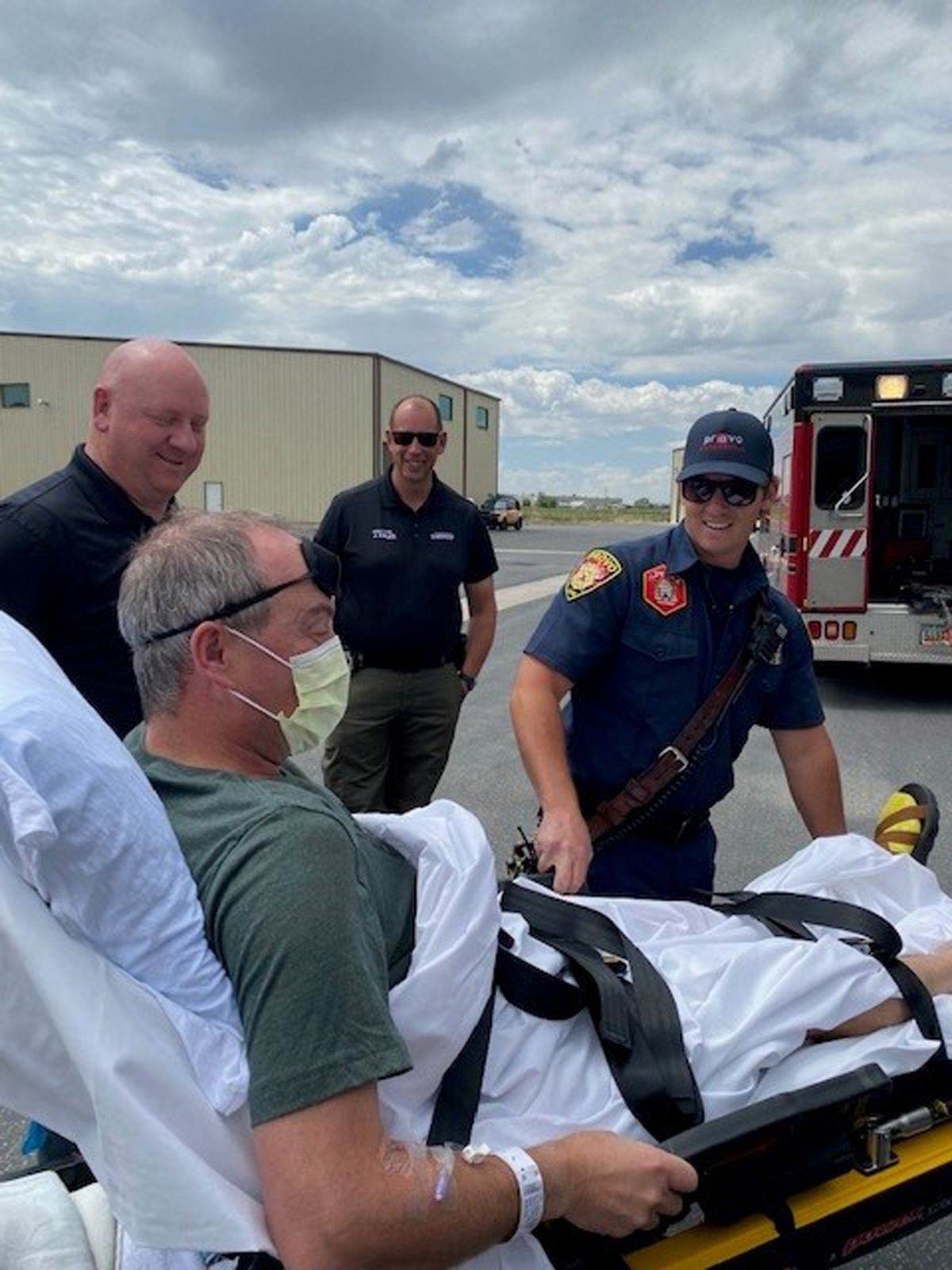
While there I managed a message to Lou who is a retired PA and advised that I couldn’t do the trip in Idaho. I was so bummed and wondered how bike riding would be for me moving forward. Without missing a beat, he responded that we would plan it for 2023.
During physical therapy I was asked to do things that were scary. Walk across a short piece of grass on uneven ground. I made it across, walking like Frankenstein. The Frankenwalking continued to creep into my gait. Also, I had to walk up a therapy sized stair prop and on a treadmill with assistance. Those were all hard, but I could feel incremental improvement and my visitors could see much more improvement than I could.
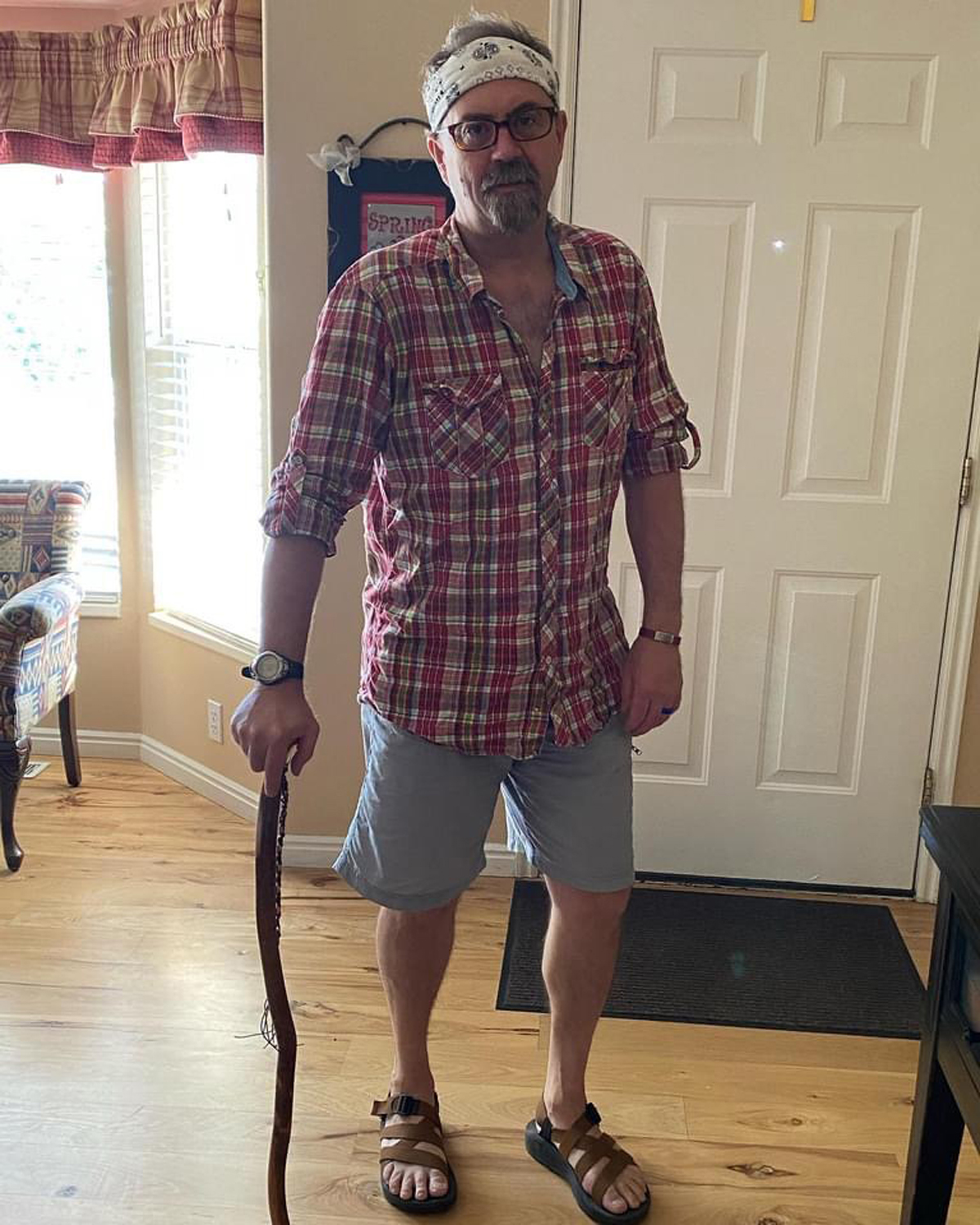
During outpatient physical therapy my therapist and I talked bikes. He rides a lefty and we found ourselves continually talking about bikes. I had considered my ability to get back on a bike but was afraid to jump right back on. So many things I’d done in the past were now required to do again for the first time. Driving, cooking, showering, climbing stairs and riding a bike.
I am 53 and fairly active. I have a blood clotting disorder which I knew about before I had the stroke. I set up my Disc Trucker on a trainer downstairs and got on. It felt so good to be pedaling, I felt balanced, and it was a good first back on a bike. I wanted more. I asked my doctors and therapists about riding again. They were supportive due to my progress in therapy but cautioned me to be careful as I was no on blood thinners.
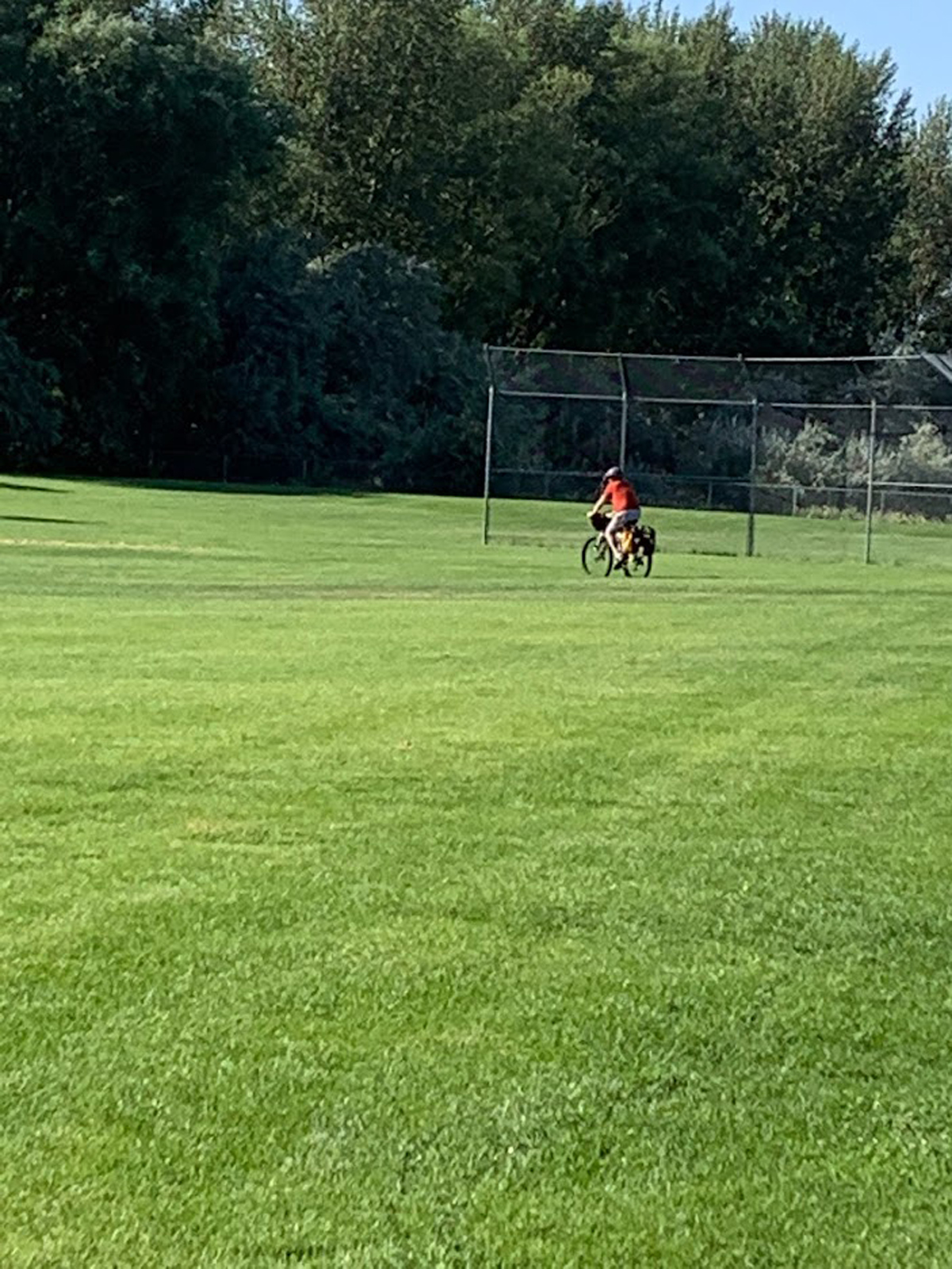
My wife has been my rock through this whole recovery process, so she supported me trying to ride on the grass field at the school nearby. I unloaded my bike and rolled it over to the grass field. I was scared to get on. I threw a leg over, looked at my wife and pushed off to pedal forward. I immediately fell over onto the grass. I was devastated.
If a horse bucks you off … My wife watched and encouraged me to be patient. I threw my leg over again with the same result. My worst fears were realized. I tried a third time and continued forward. I was ecstatic. It felt more of an accomplishment than my master’s degree. I continued to pedal in the long grass and was so happy that I could do it and had a smile like a kid at Christmas. It was a feeling of victory and success. I did have some vision problems with perception, but I felt balanced and made many tracks in the grass while getting my bearings. The long grass was a safe place to land but also exhausting.
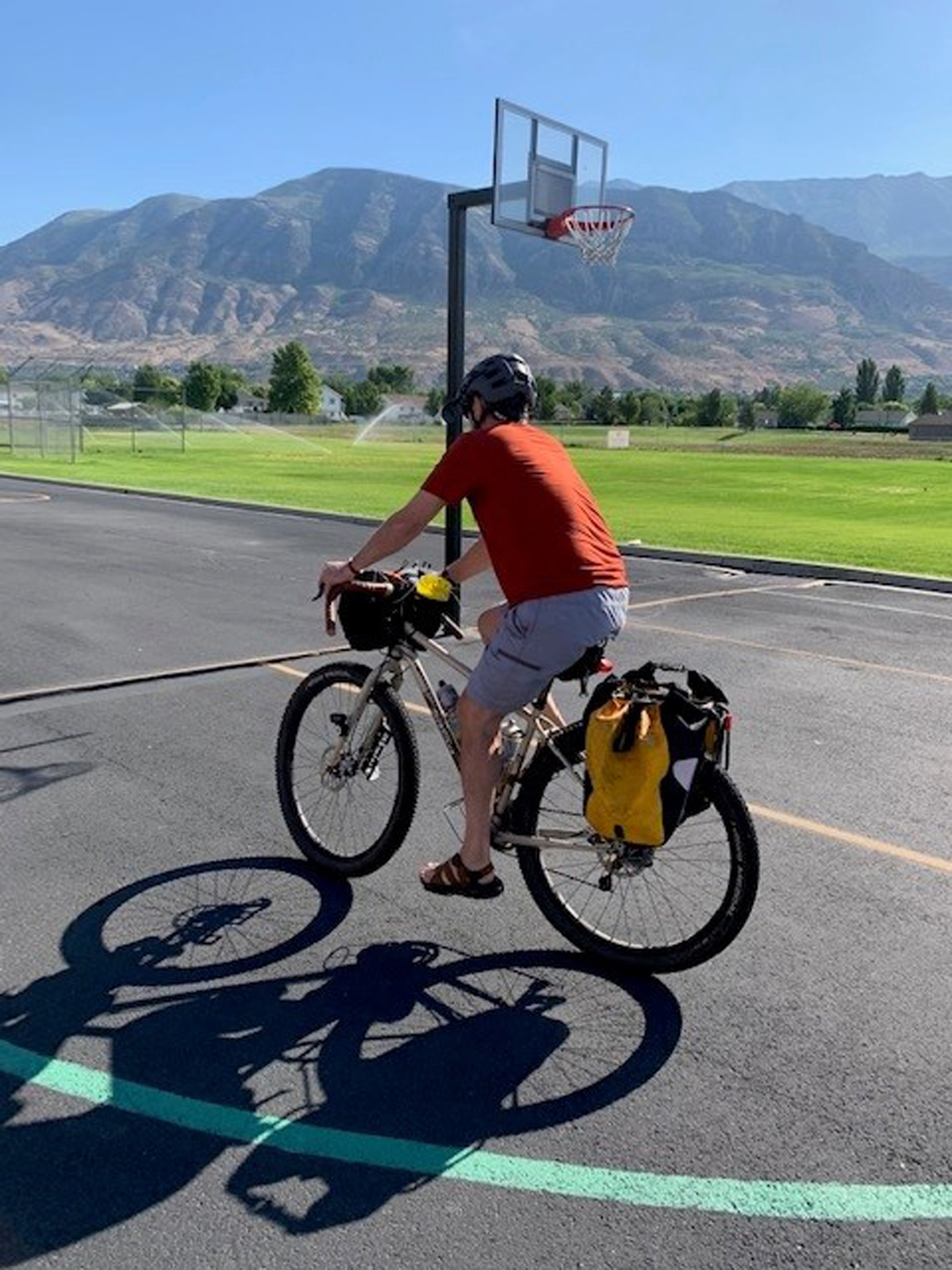
I had been in a hospital for nearly 2 weeks and not much activity besides therapy for the past 2 months. I moved over to the basketball courts and rode back and forth trying to get my bearings. When I approached an immovable object, my brain wanted to move away from it rather than ride alongside it. After doing many short practice rides over a period of weeks in safe non-traffic areas, I decided to venture out around the neighborhood. I’d ride for 1-2 hours just focusing on balance and managing the obstacles (parked cars, raised curbs) as I encountered them. I found that turning tight corners to be the most challenging for my balance.
I eventually decided to get back to commuting. My route includes riding to the train station and then from the station to work. This was another first, getting on the train and the obstacles involved. It was scary but I continued to do it. I found that I was much more balanced on my bike than walking. I returned to work 3 months after the stroke. I looked forward each day to riding to or from work. It was so enjoyable and helped me feel a bit more normal.
I work with a guy who is into bikepacking, and we started talking about putting together a manageable ride to test my ability. His wife had a traumatic brain injury 24 years earlier, so he understood some of the challenges I was facing. After a couple of months of discussion, we found a short bikepacking ride in nearby Moab, Utah.
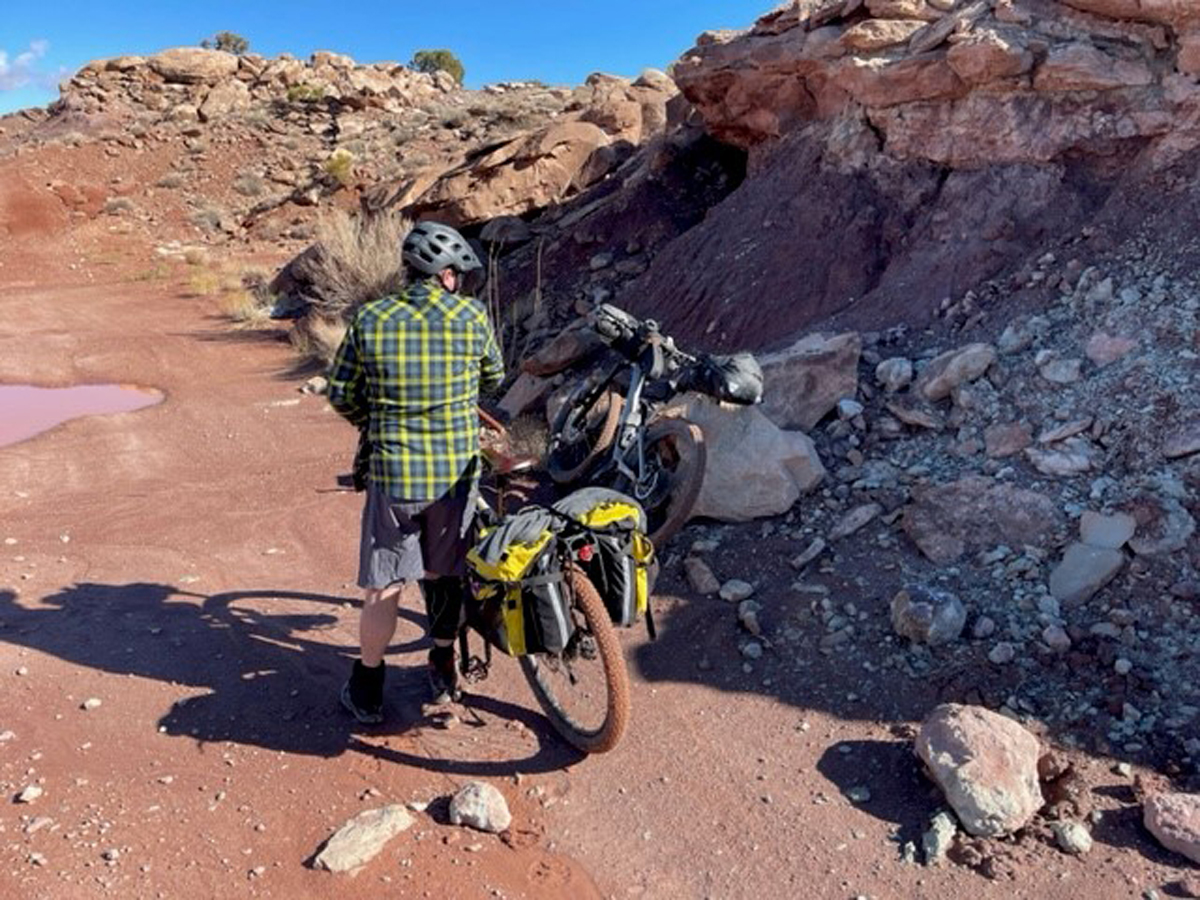
I am new to bikepacking but have bike toured all over the western US so am comfortable with carrying my gear on the bike. The weather had been unseasonably wet and cold, but we were committed and had sufficient gear, so we headed out. I had 2 rear panniers, a frame bag and handlebar bag. Bikepacking is much lighter than touring and I need to think lighter. This was planned for a three-day ride. The first day had much more Hike-a-bike than we anticipated. When we approached early afternoon on the first day, I found myself tired from so much exertion we decided to set up camp and rest.
My riding partner was very understanding, and we set up and discussed the plan for the next 2 days. I’m not even sure of the first day’s mileage but I felt good about my efforts. He noticed how unstable I get when I am tired. He did remark that he observed that I could ride a bike better than I could walk.
The next morning, we headed back to the vehicle to look for a ride with less elevation gain. We found a gravel road that led to a rock that resembled Nefertiti along the Green River, so we parked and rode the round trip 20 miles and headed home. I felt great and although we didn’t complete the ride as planned, I met the objective of putting in some loaded miles on a bikepacking route and testing my ability. I had no regrets about modifying it. I felt accomplished in my performance. It was not easy, but it was much more enjoyable “hard” than going to therapy and tongue exercises.
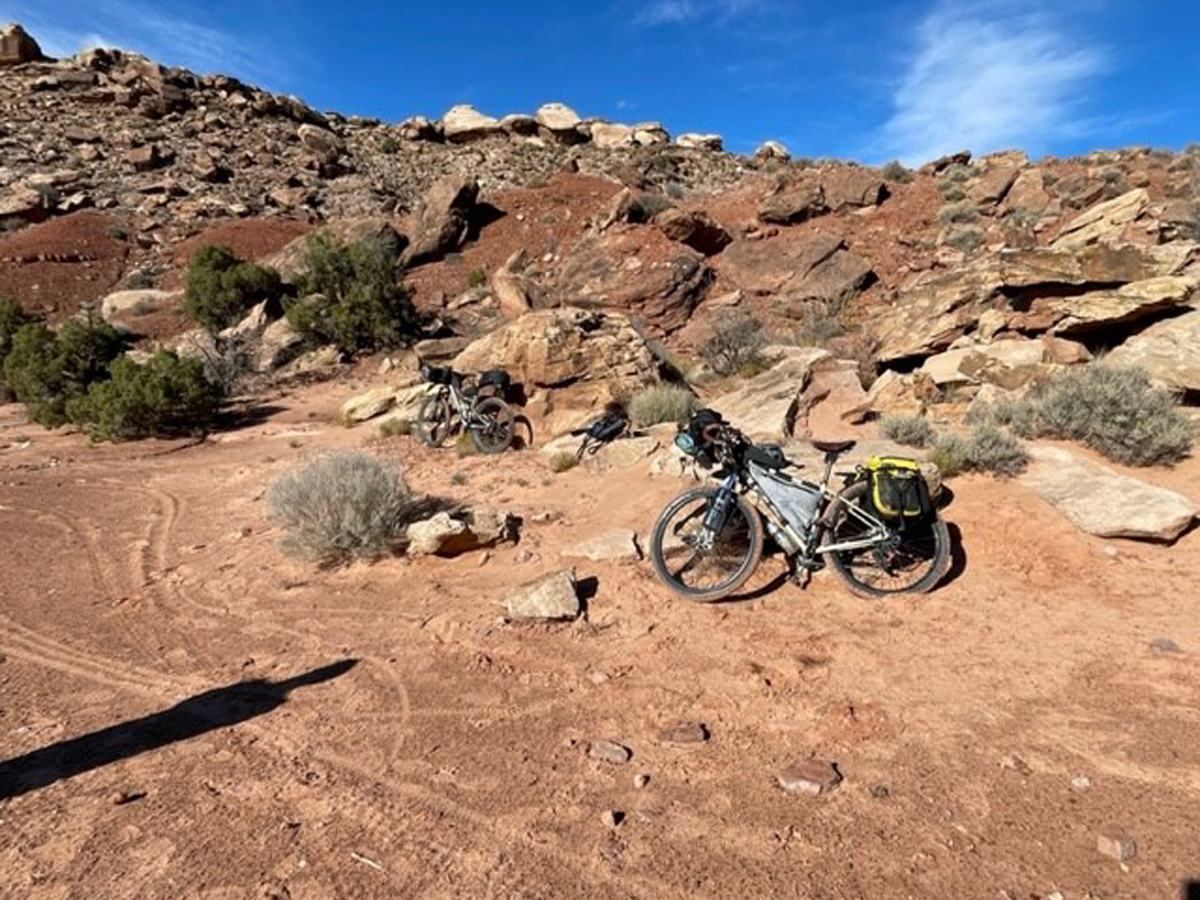
My cerebellum stroke happened on June 17, 2022, and now it’s December. I face peaks and valleys daily. I continue to improve and have a positive outlook for the Idaho Hot Springs route with Lou next September.
It occurred to me that this story is for everyone as we all can face challenges that disrupt life including hobbies and passions. I was devastated the first 2 attempts to ride the bike in the grass. If I hadn’t tried that third time, where would I be today? My doctors diagnosed my stroke as “mild”, but a mild stroke is still significant to me.
I am thankful for my recovery and the support of my family, friends, coworkers and especially my wife Kendra. I have a hopeful outlook for my bike touring/bikepacking future. It will still take hard work and doing the scary things, including new first’s, to get back to where I was, if that is even possible. I joined my physical therapist Quinn on a ride on our day off. It was great to ride the paved bike path in the canyon.
I know that COVID gets blamed for many things in positive patients. I asked the doctors taking care of me about its contribution to my stroke, but none would state that this was a COVID problem. I did have a clotting disorder already and during testing they found an Atrial Septal Defect in my heart that allowed the clot to pass through the blood/brain barrier.
When I talked to the cardiologist, he advised that there would be no attempt to repair my heart defect. First because the risk was too high for such a small defect and second because I have toured so much and challenged my heart climbing over Bald Mountain Pass and Boulder Mountain on my tours, he encouraged me to continue to ride my bike which was music to my ears. All doctors and therapists advised that my activity before the stroke would contribute to the speed of recovery and the overall recovery itself.
I eat just about what I want now. I can eat popcorn and bread which were a big no when this first happened. I need to have water close in case I choke. That is a rare occurrence now.
I get tired at the end of the day which results in balance problems. I can walk into a grocery store and feel mostly normal but once in there all the stimulation I get from the colors of the products and the obstacles of shelving, people with carts and displays, I lean on the cart because it does something to my brain which gives me balance problems. I am on thinners (Eliquis) for the rest of my life. It won’t keep me from pedaling as I believe there are equal dangers as a motorist during rush hour. I was riding to work until it got cold. Now I ride a stationary at work for an hour or so to build my strength back until it warms up. I still pull out the bike on weekends for short rides.
I thought about what it might be for someone facing other health challenges. Don’t lose hope. There are some things that I may never do again and some I will continue to do, even with limited ability.
A good friend in rehab told me that he “would do everything they ask me to do because they’ve given me this opportunity.” I told myself that I would do the same. Happy and safe pedaling.

